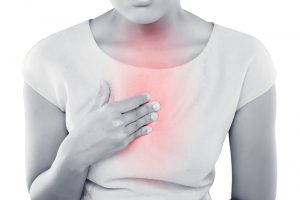The facts
It’s painful, annoying and often strikes out of nowhere. If you’ve suffered heartburn before, you’ll likely know how unpleasant it is.
For those who only experience symptoms occasionally, there are some simple steps to help relieve the burn – but let’s take a deeper look at what heartburn is, who is most at risk and how it can be treated.
What is heartburn?
It starts off as a painful burning sensation in the chest or upper stomach, which can spread to your neck, jaw and even your arms. Heartburn is caused by muscles in the oesophagus being weak, or relaxing when they shouldn’t, allowing stomach acid to rise into the oesophagus.
The muscle at the entrance of the stomach is known as the lower esophageal sphincter (LES) and it acts like a gate to let food in. Usually it should be closed to stop food and acid coming back out, however if it’s weakened or relaxed, heartburn can occur. Heartburn can also occur when the stomach produces more acid than usual, like when we are stressed.
What triggers heartburn?
Triggers for heartburn will vary from person to person but some common ones include:
- Overeating
- Laying down after you eat
- If you’re under a lot of stress
- Being overweight
- Taking certain medications
- Exercising too soon after food
- Being pregnant.
There are also certain foods which tend to trigger heartburn. Again, these will be highly individual but some common ones include:
- Alcohol
- Coffee
- Chocolate
- Onions
- Citrus fruits and juices
- Tomatoes and tomato sauces
- Soft drink and other carbonated drinks
- Spicy foods
- Greasy, fatty or fried foods.
How is heartburn treated?
Most people will only experience occasional heartburn. In this case lifestyle changes, such as avoiding the triggers above, can help prevent or manage symptoms. Over-the-counter medications such as antacids can also help to neutralise stomach acid.





